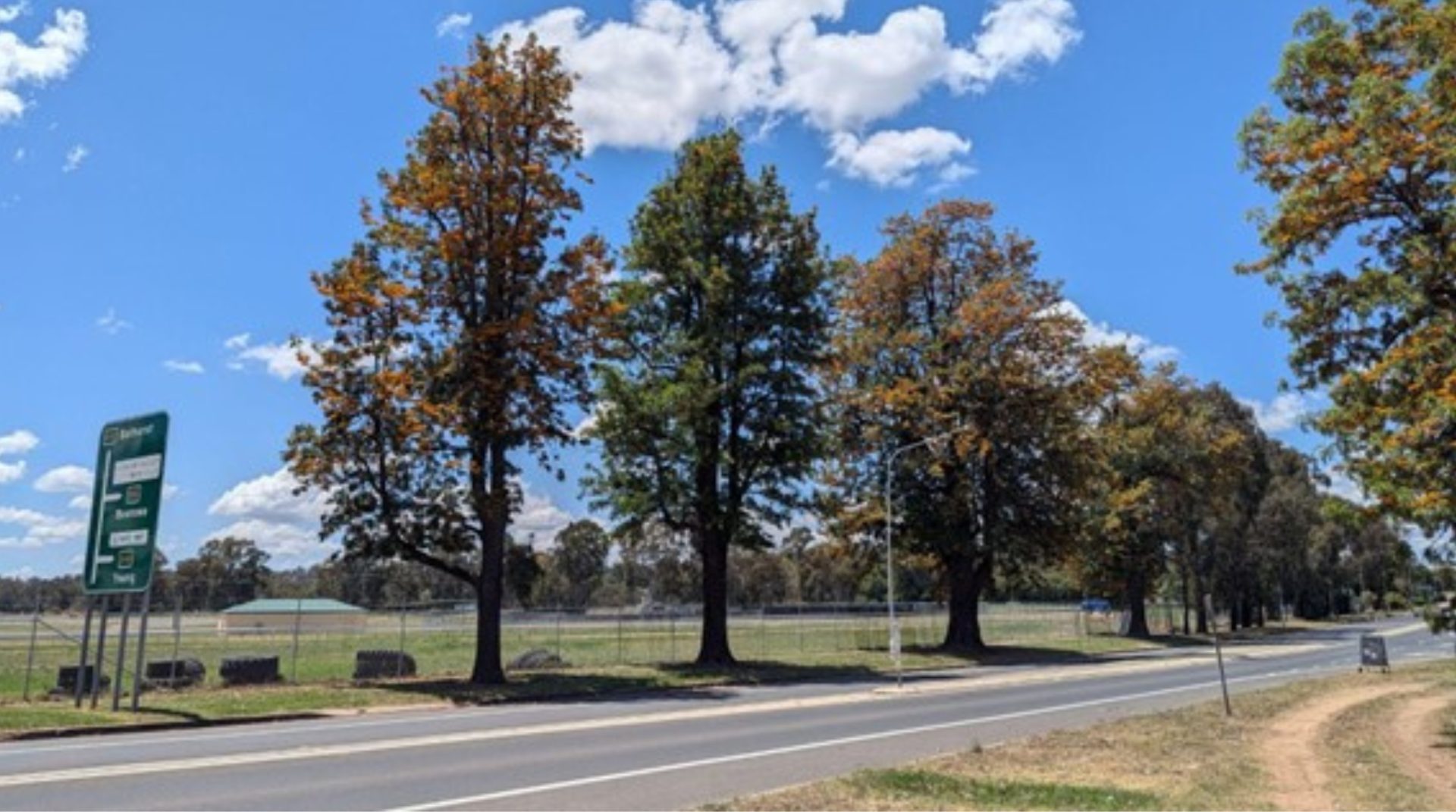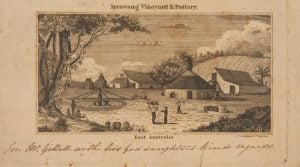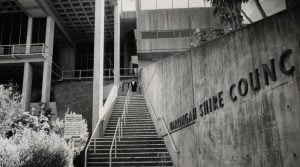From Art Deco beach pavilions to a colonial pottery site and a brutalist Civic Centre, four new listings on the National Trust (NSW) Heritage Register reflect the diversity of heritage throughout the state.

Cowra Soldiers Memorial Avenue
Planted between 1917-18, the Soldiers Memorial Avenue commemorates the local men of Cowra who fought in World War I. During the war, the Australian Women’s National League organised many thousands of women to contribute to the war effort, with one such activity being the planting of memorial avenues of trees.
The Memorial Avenue in Cowra was planted by the women of the town to both honour the local soldiers who had left to fight in the war and as a beautification project. 400 trees were donated to the project by the Royal Botanic Gardens in Sydney. Thought to be the second such avenue planted in NSW during World War I, the Cowra Soldiers Memorial is one of the earliest surviving examples of its kind in Australia.
The avenue comprises large, mature trees comprising of three species: Grevillea robusta (Silky Oak), Eucalyptus cladocalyx (Sugar Gum), and Schinus areira (Peppercorn Tree). They line two sides of the main roads leading into Cowra from the east (from Grenfell) and south (from Yass and Canberra) and are also a visual landmark to anyone entering the town from surrounding rural areas.

Irrawang Pottery
Irrawang, located near Raymond Terrace, was one of Australia’s earliest and most successful potteries. The business thrived throughout the mid-nineteenth century, providing skills training, employment, and new and adapted technologies for the local climate. The site consisted of the pottery and various outbuildings, homestead and vineyard.
The Irrawang Pottery produced well priced, high quality, local earthenware for the people of the colony, and its pieces became a household staple. However, the discovery of gold in the 1850s led to a mass exodus of skilled labour to the central west, eventually causing the pottery to be inoperable and closure of the site.
The closure of the pottery, however, was not the end of its journey in the history of NSW. About a century after its closure, the remains of the pottery became the leading archaeological training site for students of the Archaeology Society at the University of Sydney. Until this point, excavation training for Australian students had largely been undertaken at existing digs abroad. Directed by Judy Birmingham from the late 1960s, the excavation led to the establishment of the Historical Archaeology course at the University in 1974. The dig at Irrawang trained many of Australia’s earliest pre-eminent archaeologists; their first uncovered artefacts are now displayed in various museums across the state.

Cronulla Art Deco Beach Pavilions
Cronulla is home to a number of Sydney’s iconic ocean baths, built along the foreshores of the beaches and bays for the recreation of locals and visitors alike. The swimming facilities at Shelly Park, Oak Park and Gunnamatta Bay Park are also home to three locally beloved Art Deco beach pavilions.
Many of these swimming holes in NSW are strategically located at places already used by the local Aboriginal populations who had identified, utilised and enjoyed these spots for millennia. Recreational swimming by westerners began in Cronulla around the turn of the century, with man-made rock pools constructed at Shelly and Oak beaches around 1909, and the Gunnamatta Bay enclosure in 1915. Depression stimulus funding led to the redevelopment of the pools in the late 1930s, as well as the construction of facilities such as the beach pavilions.
All three pavilions are of an inter-war Art Deco architectural style and are painted a soft yellow, with a darker trim. Each is designed in a symmetrical layout, with a prominent central section framing a view towards the ocean or bay and has provided a resting area for bathers for almost a century.

Warringah Civic Centre
The Warringah Civic Centre is an important modern complex that reflects Australia’s mid-century interest in public design. Constructed in 1966, the precinct reflects the collaboration between prominent architectural firm Edward Madigan Torzillo and Briggs with renowned landscape architect Bruce Mackenzie, who worked in conjunction to make a cohesive landscape of both building and bushland for the North Beaches community.
The complex has aesthetic significance for its materiality and brutalist design, its interiors now an important document of civic design throughout the 1970s. The implementation of Australian native species and remnant bushland into the landscaping of the centre also reflects changing principles in the landscaping community, with a shift towards celebrating and utilising local species.
In 1966 the Warringah Civic Centre was awarded the Sir John Sulman Medal from the NSW Chapter of the Royal Australian institute of Architects for its innovative modernist design.
Find out more
The National Trust’s mission is to advocate for the conservation of built, cultural and natural heritage. Read more about our campaigns and advocacy work.
Stay up-to-date with the latest National Trust news, events and special offers by subscribing to our monthly newsletter.
